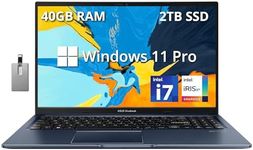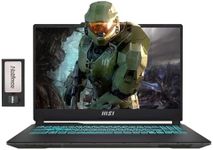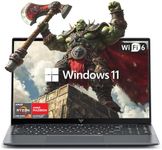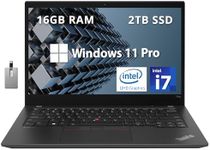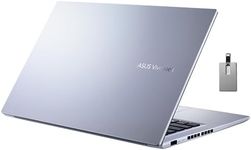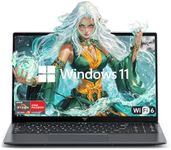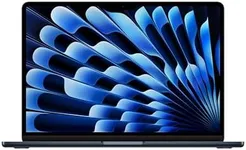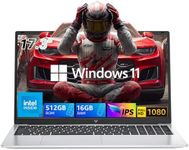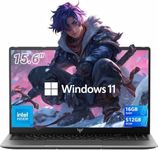Buying Guide for the Best Laptops With Backlit Keyboards
Choosing a laptop with a backlit keyboard can make a big difference in your comfort and productivity, especially if you often work in low-light environments. When shopping for such a laptop, it's important to look beyond just the backlit feature and consider other key specifications that will affect your overall experience. Understanding what each spec means and how it relates to your needs will help you make a smart choice that fits your lifestyle, whether you're a student, professional, or casual user.Keyboard BacklightingKeyboard backlighting refers to the illumination of the keys, making them visible in dim or dark settings. This feature is important if you often type at night or in places with poor lighting, as it reduces eye strain and helps you find keys more easily. Backlighting can be single-color (usually white) or multi-color (RGB), and some laptops allow you to adjust the brightness or color. If you just need basic visibility, a simple white backlight is enough. If you enjoy customizing your setup or want to highlight certain keys, look for models with adjustable or RGB lighting. Think about when and where you use your laptop most to decide which type of backlighting suits you best.
Display Size and ResolutionDisplay size is the measurement of the screen, usually in inches, and resolution refers to how many pixels are shown on the screen. A larger display can make multitasking and watching videos more comfortable, while a higher resolution means sharper images and text. Common sizes range from 13 to 17 inches, and resolutions from HD (1366x768) to 4K (3840x2160). If you travel a lot or need something portable, a smaller screen is easier to carry. If you do creative work or want a more immersive experience, a larger, higher-resolution screen is better. Match the display to your main activities for the best experience.
Processor (CPU)The processor is the brain of the laptop and determines how quickly it can run programs and handle tasks. Processors come in different types and speeds, often described by the number of cores and their clock speed (measured in GHz). Entry-level CPUs are fine for web browsing and basic tasks, mid-range CPUs handle multitasking and light creative work, and high-end CPUs are best for gaming, video editing, or heavy workloads. Consider what you plan to do most often on your laptop to choose the right level of performance.
Memory (RAM)RAM is the short-term memory that helps your laptop run multiple programs at once. More RAM means smoother multitasking and better performance with demanding applications. Laptops typically come with 4GB, 8GB, 16GB, or more. For basic use like browsing and word processing, 4GB to 8GB is usually enough. For more intensive tasks like photo editing or running many apps at once, 16GB or more is recommended. Think about how many programs you use at the same time to decide how much RAM you need.
Storage Type and CapacityStorage is where your files, programs, and operating system are kept. The two main types are HDD (hard disk drive) and SSD (solid state drive). SSDs are much faster, making your laptop start up and load programs quickly, while HDDs offer more space for less money but are slower. Storage capacity is measured in gigabytes (GB) or terabytes (TB). If you want speed and reliability, choose an SSD. If you need lots of space for files and don't mind slower performance, an HDD or a combination of both might work. Consider how much data you store and how fast you want your laptop to feel.
Battery LifeBattery life tells you how long the laptop can run on a single charge. This is especially important if you use your laptop on the go or away from power outlets. Battery life can range from a few hours to over 10 hours, depending on the laptop and how you use it. If you travel or work in different places, look for a laptop with longer battery life. If you mostly use your laptop at a desk, this may be less important.
Build Quality and PortabilityBuild quality refers to how sturdy and well-made the laptop feels, while portability is about how easy it is to carry. Lighter, thinner laptops are easier to take with you, but may have fewer ports or features. Heavier laptops might offer more power or a bigger screen, but are less convenient to move around. If you need a laptop for travel or commuting, prioritize lightweight and slim designs. If you mostly use it in one place, a heavier model with more features could be a better fit.


